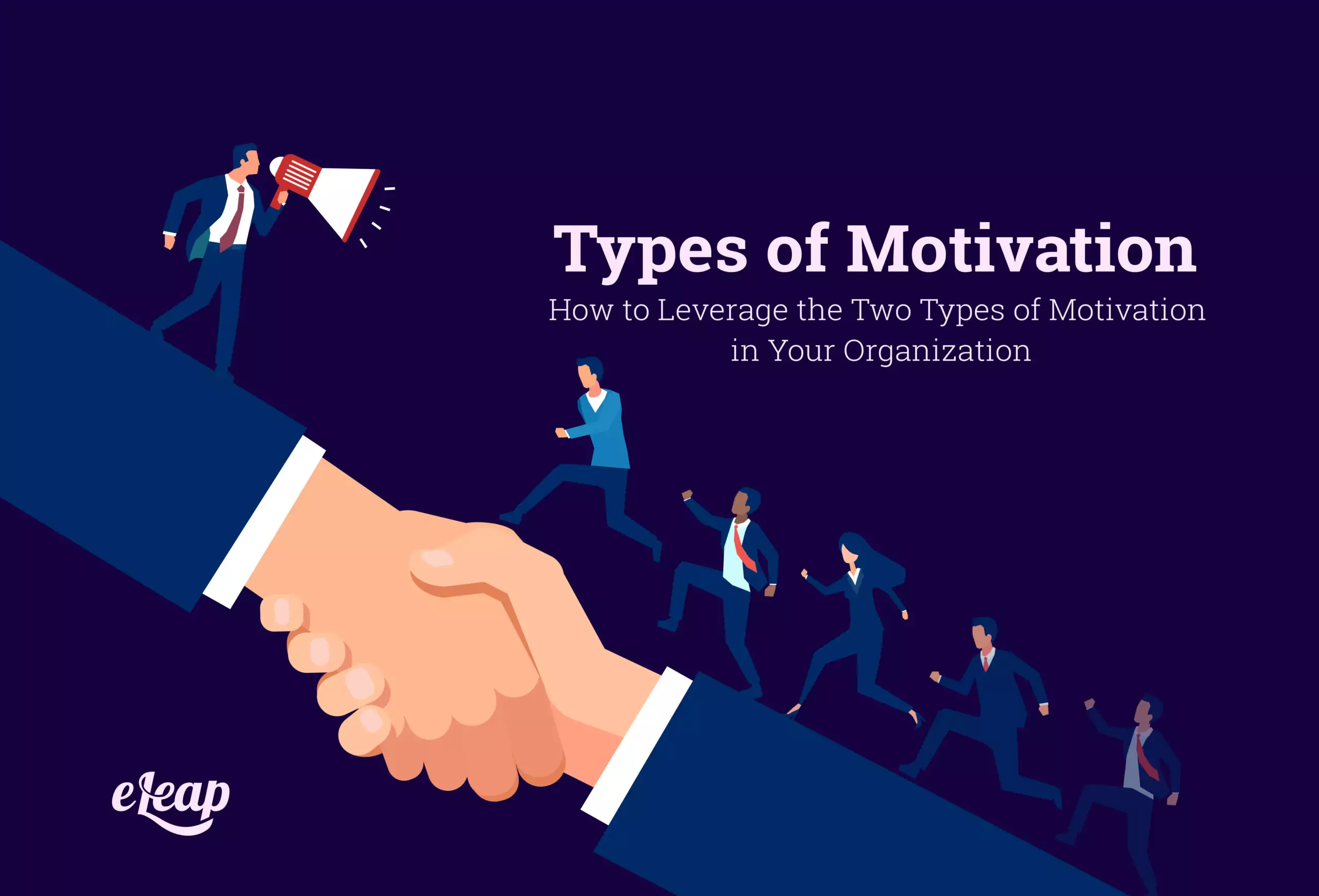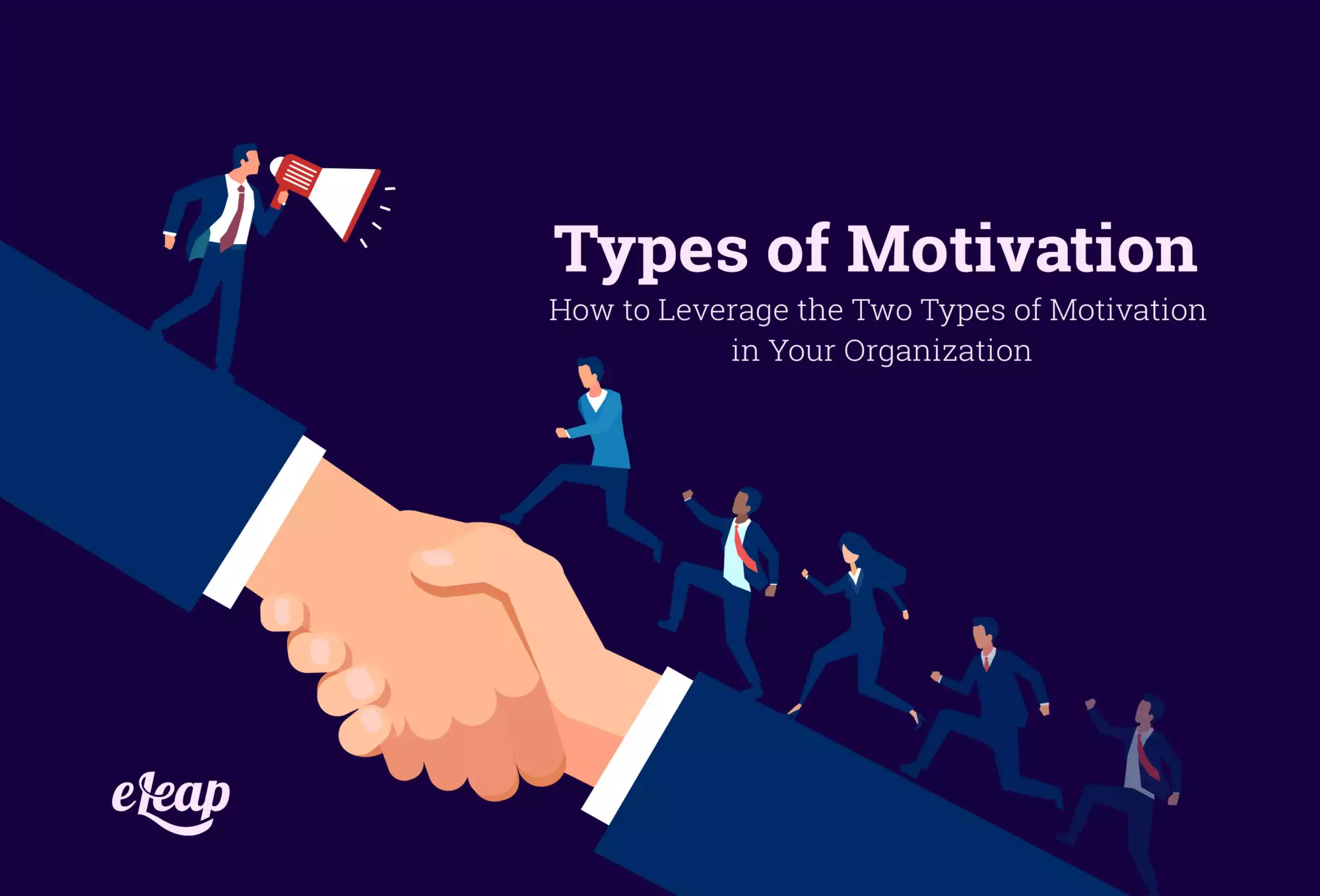Types of Motivation
How to Leverage the Two Types of Motivation in Your Organization

Have you ever watched a movie about a sports team and been on the edge of your seat as they got to the big game? Everything is riding on that moment, and just when it looks like the team may fail, the coach steps in and delivers the most motivating speech you’ve ever heard. Suddenly, the team is back at it, scoring the winning points and making the entire movie worth it. If you’ve ever wanted to have that exact moment in your office, we have good news for you!
It is possible to become an excellent motivator if you understand the two types of motivation and how to leverage them. You can be just as inspirational as those rousing coaches, even if the work your team is doing isn’t quite as exciting as winning a championship game.

What Are the Two Types of Motivation?
You may find books or other articles that claim that there are many types of motivation – but the truth is that every type boils down to just two. Motivation is either intrinsic or extrinsic.
Intrinsic motivation is the motivation that comes from within a person. It can be felt or understood in many ways, such as:
- The rush of satisfaction a person feels after they complete a job, they placed a high value on.
- The dopamine that a person’s brain releases when they receive praise for doing a great job.
- The sense of purpose and fulfillment when doing work, they feel aligns with their values and interests.
Extrinsic motivation is the type of motivation people feel from outside themselves. Examples of extrinsic motivation include:
- The excitement of getting a reward for completing a task.
- Getting a promotion or a raise for being a committed employee.
- The threat of losing a job or a reward if a task isn’t completed.
Breaking Down the Types of Motivation
Within these two types of motivation, there are several subtypes. Understanding the breakdown of each type of motivation can help you when learning how to lead your team.
The subtypes of intrinsic motivation include:
- Learning Motivation: Being driven by the curiosity or desire to improve your own skills.
- Creative Motivation: Being driven by the desire to express something in some way.
- Accomplishment Motivation: Being driven by the desire to achieve personal development, such as achieving a particular title for prestige.
- Helpfulness Motivation: Being driven by a strong desire to make a positive change in the world.
- Belonging Motivation: Being driven by a desire to belong in a group because of that group’s mission or vision.
- Basic Needs Motivation: Being driven by basic human needs such as food, water, and shelter.
The subtypes of extrinsic motivation include:
- Rewards Motivation: Being driven by a reward, such as a bonus or a day off.
- Leadership Motivation: Being driven by the desire to have power or to be a leader of other people.
- Fear Motivation: Being driven by the fear of losing something, such as the fear of being fired, or the fear of a negative consequence, such as the fear of a fine.
Achieving More with the Types of Motivation
Now that you know what types of motivation exist, how can you leverage this knowledge to create a highly motivated team?
First, start by forgetting any assumptions you may have made about an unmotivated team member. It may seem as though they are lazy or don’t like their role, but in reality, it may be that you haven’t uncovered what motivates them best.
Assume that every team member wants to be effective in their role and that they only need your help unlocking that potential. Once you do that, you can identify in what ways a person is dissatisfied with their work. The area of dissatisfaction is a great place to start trying to motivate them.
Personalize how you approach each employee by using what you know about the types of motivation. Many business courses will teach you to motivate using Maslow’s Hierarchy of Needs. This identifies the needs that a person has in the order of importance: physical needs such as food and air; shelter; love and acceptance from others; self-esteem; and finally, a sense of doing what we were born to do.
But there are other tools and strategies you can use to identify how to motivate your team. For example, McClelland’s Human Motivation Theory says that workers need three things: a sense of achievement, a sense of affiliation, and a sense of power. You can enhance motivation in these areas by praising achievements when you see them, improving the sense of camaraderie with team-building activities, and ensuring that employees have the opportunity for leadership.
When you are researching and choosing the right strategy for your leadership style, keep in mind both intrinsic and extrinsic types of motivation. If you need to enhance the sense of accomplishment, offer the extrinsic motivation of a tangible reward, and encourage the intrinsic motivation by verbally praising a job well done.
Critical Takeaways for Workplace Leaders
If you want to be a motivating leader, your goal should be to keep your team motivated through every project. Of course, people do have to take responsibility for internally motivating themselves. But you can help by offering rewards, praise, and a culture that encourages the types of motivation.
First, never assume that an employee doesn’t want to work. Start with the understanding that everyone wants to contribute.
Next, identify what areas the employee needs motivation. Use the areas where they seem dissatisfied as a clue for where to start.
Next, choose the motivational strategy that works best for your team. There are many out there that can offer you guidance on how to motivate employees best.
Finally, offer both intrinsic and extrinsic motivation with a tailored approach. Practical results will come the more you understand the types of motivation.
Remember, you can become an inspiring “coach” just like the movies when you encourage your employees to meet and exceed their own wildest expectations.